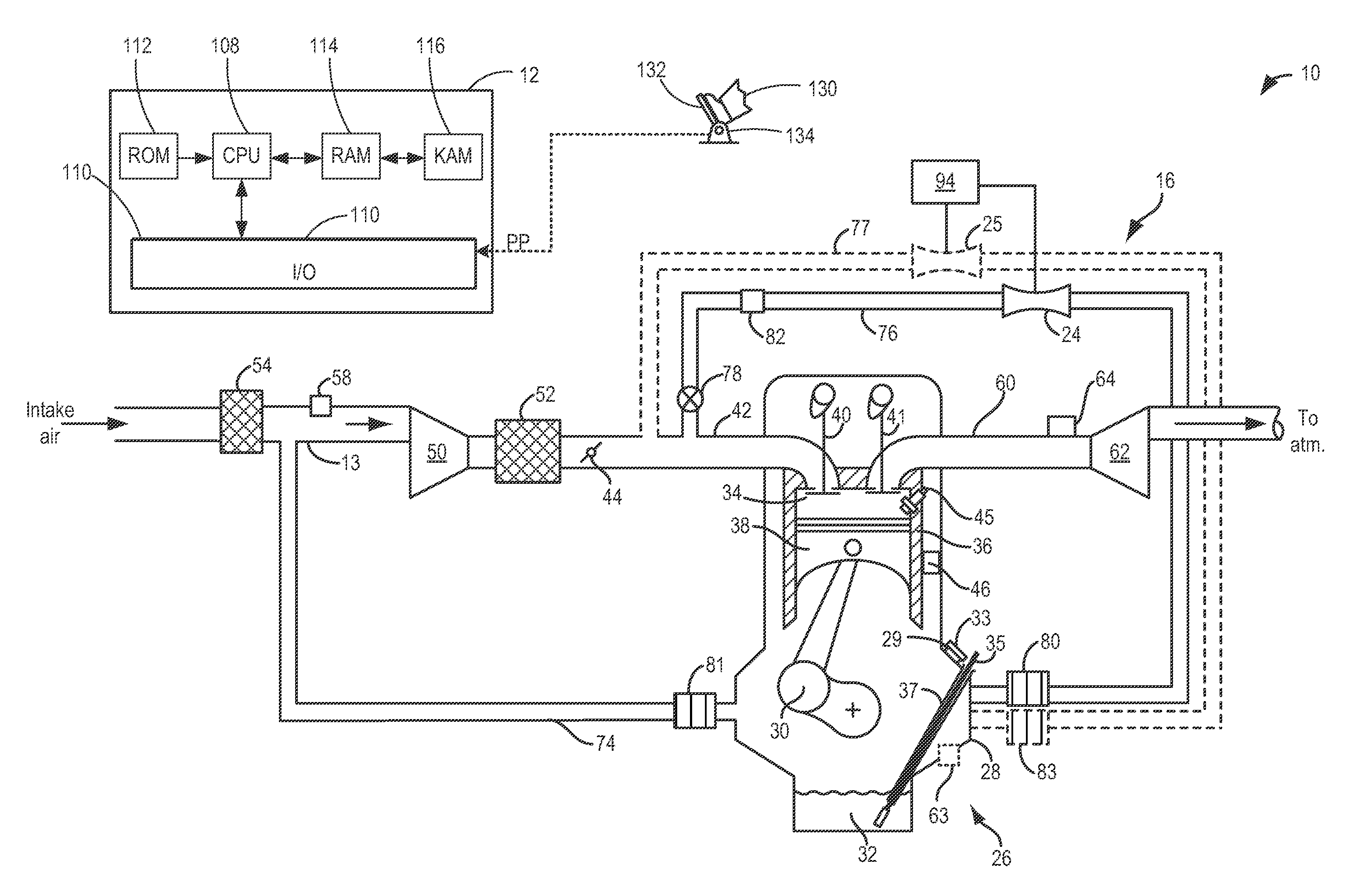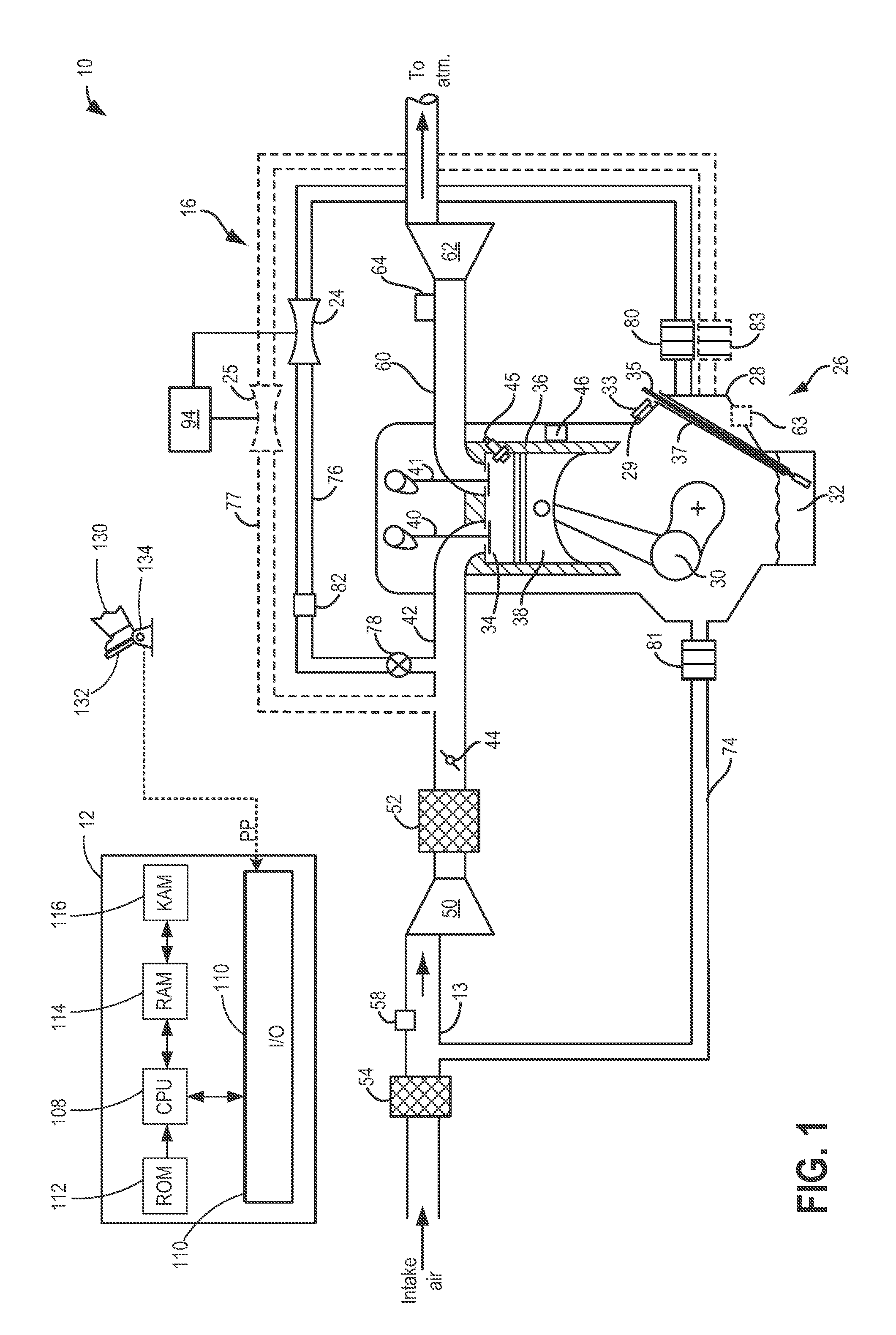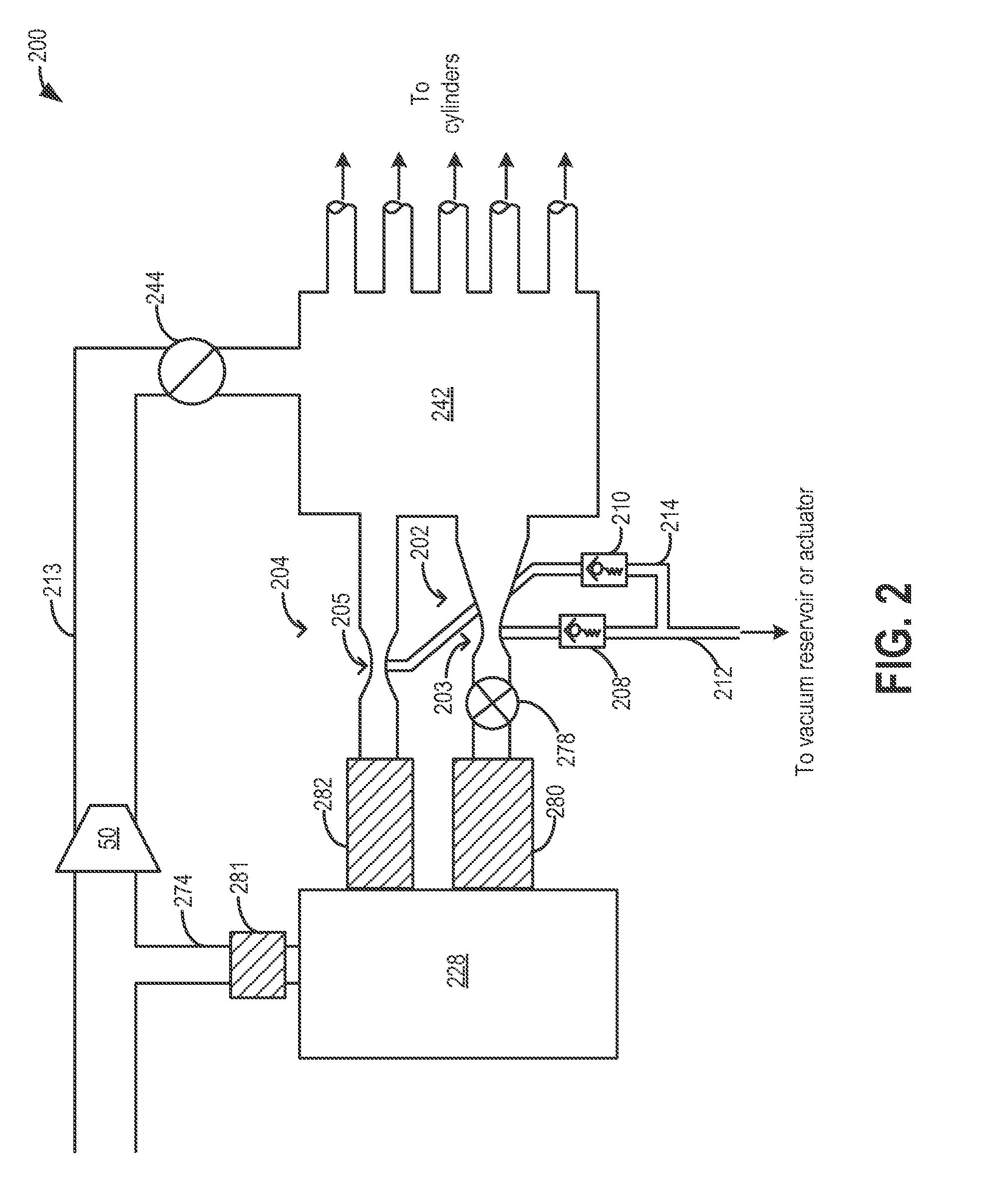Crankcase ventilation and vacuum generation
- Summary
- Abstract
- Description
- Claims
- Application Information
AI Technical Summary
Benefits of technology
Problems solved by technology
Method used
Image
Examples
Embodiment Construction
[0014]The following description relates to systems and methods for flowing air and / or crankcase gases in a positive crankcase ventilation (PCV) line of an engine system (such as the engine system of FIG. 1) through an aspirator to generate vacuum. Based on a direction of flow in the PCV line between an engine intake manifold and a crankcase, and further based on the configuration of the aspirators (such as the aspirators of FIGS. 2-3), the flow may be directed through a selected aspirator. An engine controller may be configured to perform control routines, such as those of FIGS. 4-6, to direct flow through the selected aspirator(s) and store the generated vacuum in a vacuum reservoir for subsequent use. In this way, vacuum may be generated irrespective of the direction of flow (of air or crankcase gases) in the PCV line. Additionally, vacuum generation may be enabled for a wider range of engine operating conditions.
[0015]Referring now to FIG. 1, it shows an example system configurat...
PUM
 Login to View More
Login to View More Abstract
Description
Claims
Application Information
 Login to View More
Login to View More - R&D
- Intellectual Property
- Life Sciences
- Materials
- Tech Scout
- Unparalleled Data Quality
- Higher Quality Content
- 60% Fewer Hallucinations
Browse by: Latest US Patents, China's latest patents, Technical Efficacy Thesaurus, Application Domain, Technology Topic, Popular Technical Reports.
© 2025 PatSnap. All rights reserved.Legal|Privacy policy|Modern Slavery Act Transparency Statement|Sitemap|About US| Contact US: help@patsnap.com



